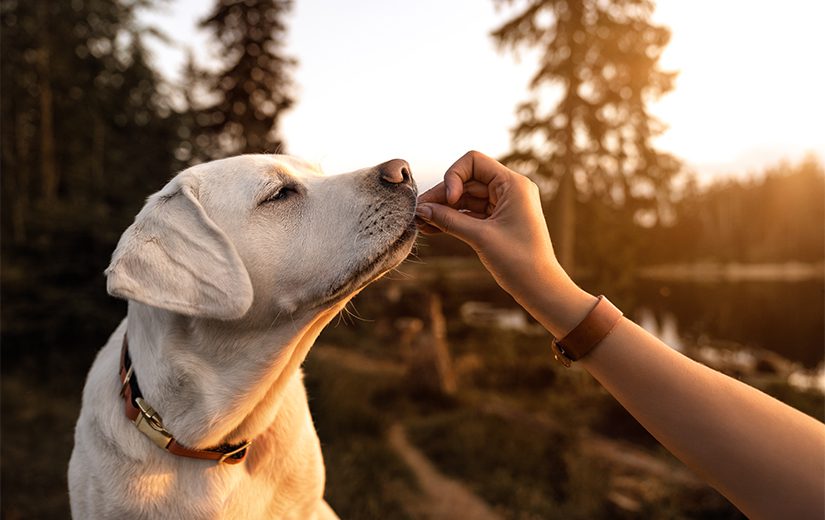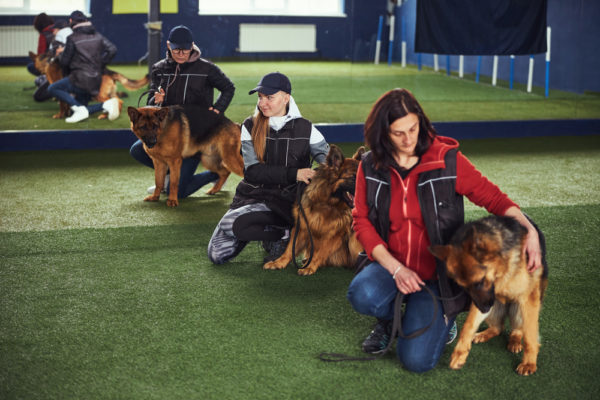Effective Puppy Training to Help Your Pet Grow into a Well-Behaved Adult Dog
Effective Puppy Training to Help Your Pet Grow into a Well-Behaved Adult Dog
Blog Article
Transform Your Canine's Habits With Proven Training Techniques
Transforming your canine's habits calls for a nuanced understanding of their specific characteristics and demands, in addition to the application of tried and tested training approaches. By utilizing favorable reinforcement and identifying necessary signs in their body language, you can efficiently attend to common behavioral issues such as too much barking or jumping. Uniformity in your training method not only boosts obedience but also promotes a much deeper bond of depend on and regard between you and your family pet. The course to successful change might offer unanticipated difficulties that warrant additional exploration.

Recognizing Pet Dog Habits
Comprehending pet behavior is essential for efficient training and interaction between humans and their canine buddies. Pet dogs, as social animals, show a series of habits influenced by genes, setting, and experiences. Identifying these habits aids owners tailor their training approaches to meet the specific needs of their pets.
Secret facets of pet behavior include body language, vocalizations, and social interactions. Additionally, socializing plays an important duty in shaping actions; canines that interact positively with different people and various other pets are normally much more adaptable and well-adjusted.
Moreover, acknowledging tension signals-- such as avoidance, panting, or pacing habits-- can protect against escalation into more major issues. Proprietors who are attuned to their canine's behavior can create a risk-free and nurturing atmosphere, promoting trust and improving the training process. Ultimately, a deep understanding of canine habits lays the foundation for a harmonious relationship and efficient training results, ensuring both pets and their proprietors prosper together.
Favorable Support Techniques
Positive reinforcement techniques are extensively identified as one of one of the most effective methods for training pet dogs, promoting a favorable discovering atmosphere. This technique includes fulfilling desired behaviors with treats, appreciation, or play, thereby motivating the canine to duplicate those behaviors (Dog training). Unlike punishing methods, favorable support constructs trust fund and reinforces the bond between the canine and the instructor
Incentives ought to be given promptly following the wanted actions to aid the pet dog make the connection. Consistency is additionally necessary; making use of the very same commands and rewards aids the pet understand what is expected.
It is essential to keep in mind that favorable support is not concerning bribery; rather, it is about enhancing great habits. With time, as the pet dog learns to link specific actions with positive results, the frequency of incentives can be progressively minimized, transitioning to spoken appreciation or intermittent incentives. This approach not just urges obedience yet also promotes a pleased and certain pet dog, making training an extra satisfying experience for both parties entailed.
Attending To Usual Issues
Attending to usual issues during pet training is crucial for making certain a harmonious and effective relationship in between the pet dog and its proprietor. Lots of canine proprietors encounter behavioral challenges, such as too much barking, jumping, and leash drawing. Understanding the origin causes of these actions is critical for efficient training.
Extreme barking may originate from boredom, stress and anxiety, or an absence of socialization. To mitigate this, offer sufficient workout, mental stimulation, and chances for social communication with both human beings and other pets. Leaping can often be an indication of exhilaration or a desire for interest. Educating the dog to rest upon greeting can redirect this behavior favorably.
Chain pulling is an additional common issue, often resulting from a dog's passion to check out. Making use of proper leash handling methods, incorporated with training procedures that encourage loose-leash walking, can considerably enhance this behavior.
Additionally, concerns like resource securing or splitting up stress and anxiety require customized techniques. Progressive desensitization and counter-conditioning can be reliable in addressing these difficulties. By identifying and proactively handling these usual issues, pet dog owners can promote a more enjoyable training experience and reinforce the bond with their canine buddies.
Consistency in Training
Uniformity is a keystone of effective pet dog training, as it develops a clear framework for the pet to understand assumptions and actions. When incentives, signs, and commands are used consistently, dogs can quicker grasp what is required of them. Irregular training can lead to complication, causing unwanted behaviors that discourage both the instructor and the canine.
To achieve uniformity, it is vital that all members of the house stick to the same training techniques. Using the same verbal signs and hand signals ensures that the dog receives uniform messages. Additionally, the timing of rewards and corrections should be consistent; instant reinforcement boosts the probability that the dog will certainly connect the behavior with the outcome.
Additionally, developing a routine can even more boost consistency. Routine method sessions, paired with organized routines for feeding, walking, and playtime, assistance pet dogs expect and recognize their atmosphere, making them much more responsive to training. Inevitably, uniformity fosters a feeling of security and trust, encouraging dogs to read more successfully. By committing to an organized method, trainers can advertise favorable behavior adjustments and more information cultivate a courteous check my blog buddy.
Structure a Solid Bond
How can cultivating a solid bond between a canine and its owner boost the training experience? When a dog feels secure in its connection with its proprietor, it is more most likely to display favorable behaviors and be receptive to finding out.

Additionally, a reputable connection can minimize stress and anxiety and behavioral concerns, as canines are less most likely to act out when they feel comprehended and cared for. Prioritizing the growth of a solid bond not just boosts the training experience however also contributes to a better and a lot more well-adjusted pet dog. Eventually, the journey of training changes right into a collaborative collaboration, leading to lasting behavior renovations.
Final Thought

Owners who have a peek at this site are attuned to their pet dog's actions can develop a safe and nurturing environment, promoting depend on and boosting the training process. Eventually, a deep understanding of canine actions lays the foundation for a harmonious connection and reliable training end results, making certain both pet dogs and their proprietors thrive together.
Dealing with common issues during canine training is vital for making certain a harmonious and successful relationship between the dog and its owner (Dog training).Uniformity is a cornerstone of effective dog training, as it establishes a clear framework for the pet dog to comprehend expectations and behaviors.In final thought, changing a pet's actions with verified training approaches needs an understanding of canine actions, the application of favorable support techniques, and an emphasis on uniformity
Report this page